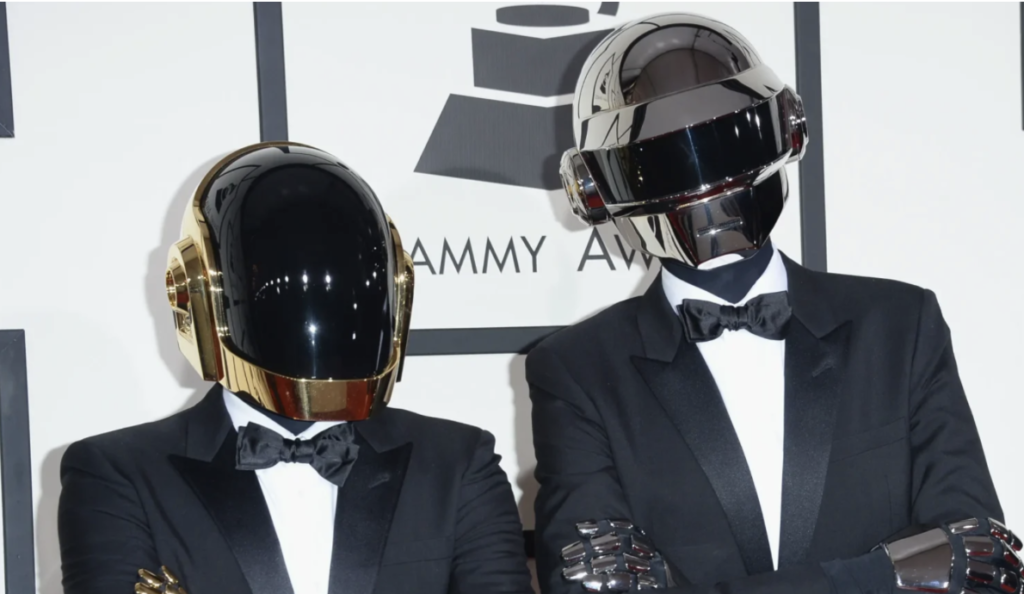This morning, in appropriately aesthetic-minded fashion, Daft Punk announced that they’re breaking up.
In lieu of a tribute to how Bangalter and Homem-Christo impacted electronic and house music (or even how they then spun their talents into an incredible disco album), here’s a look back at Daft Punk’s best moments—not as artists or musicians, but as robots.
This March marks the 20th anniversary of the release of Daft Punk’s breakout album, Discovery—the one that brought us indelible electronic hits like “One More Time” and “Harder, Better Faster, Stronger.”
But Discovery was more than the LP that put a couple of French nerds named Thomas Bangalter and Guy-Manuel de Homem-Christo on the map for people outside of the dance music scene.
It was also the first album that saw those two French nerds shed their humanity altogether.
Though they started wearing masks to add a layer of theatricality or winking artificiality to their work ahead of the 1997 release of their debut album, Homework, the duo took Discovery as a chance to lean into the general perception of electronic music and establish a gimmick so great—and so actively maintained and endorsed—that it ultimately transcended the idea of a gimmick.
In 1999, Daft Punk didn’t just start dressing like robots. Daft Punk became robots.

Since the release of Discovery, Daft Punk has become a band that is as much about aesthetics as it is about music, no matter how popular and influential and Grammy-winning that music has become over the years.
That’s why Daft Punk didn’t just do the soundtrack for Tron: Legacy and leave it at that; Daft Punk is in Tron: Legacy making robot music as robots in a computer.
Daft Punk didn’t just collaborate with The Weeknd on a couple of hit songs; Daft Punk physically appears in The Weeknd’s videos as larger-than-life futuristic machines with robot helmets and truly glorious capes.
For the full article, please click here.
Also on Coast to Coast
-
Sara Blakely Sends 1,000 Girls to “Camp Invention” This Summer
-
ACM Announces Industry and Studio Recording Awards
-
Coast to Coast Kicks Back at GBK Brand Bar’s Pre-Oscar Luxury Lounge
-
Exploring Kate Hudson’s Newest Music Video for Debut Song, “Talk About Love”
-
Checking Out the Big Winners at the 35th Annual PGA Awards!